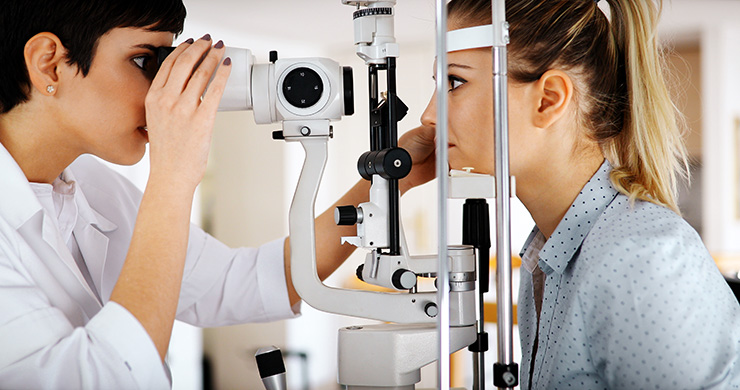How an Eye Doctor Can Help Avoid Vision Complications in Chino
How an Eye Doctor Can Help Avoid Vision Complications in Chino
Blog Article
Exploring the most up to date Technical Innovations in Optometry and What They Mean for Optometrists
In the ever-evolving field of optometry, current technological developments are improving exactly how experts come close to eye care. From the precision of Optical Comprehensibility Tomography to the nuanced understandings provided by AI-driven diagnostic devices, these technologies are establishing new standards in patient evaluation and therapy. Teleoptometry is poised to redefine access, guaranteeing that experience transcends geographical limitations. As these innovations penetrate the method, eye doctors are confronted with the challenge of embracing these devices to enhance client results. Yet, the inquiry continues to be: just how will these technical shifts redefine the roles and responsibilities within the profession?
Innovations in Diagnostic Tools
Progressing the area of optometry, developments in diagnostic tools have actually revolutionized the means eye treatment professionals examine and detect aesthetic disabilities and ocular problems. The past years has actually witnessed considerable technical advancements, enabling more exact and detailed evaluations. Optical Comprehensibility Tomography (OCT), for instance, gives high-resolution cross-sectional pictures of the retina, permitting the early detection of conditions such as glaucoma and age-related macular deterioration. This non-invasive imaging method has become indispensable in contemporary optometric practice.
Another key technology is the introduction of sophisticated corneal topography systems, which map the surface area curvature of the cornea with precision. These tools are especially advantageous for suitable call lenses and detecting corneal problems. Furthermore, electronic retinal imaging has transformed traditional ophthalmoscopy, offering thorough, panoramic sights of the retina that facilitate thorough visual assessments.
The advancement of wavefront aberrometry has actually likewise been crucial, making it possible for the analysis of refractive errors with unparalleled precision (Eye Doctor Optometrist). This innovation assists in customizing rehabilitative lenses and boosting surgical end results for refractive surgeries. Collectively, these analysis advancements equip eye doctors to supply premium patient care, making certain early treatment and customized therapy approaches, ultimately improving aesthetic health and wellness results
AI in Person Management
Structure on the structure of advanced diagnostic devices, the unification of fabricated knowledge (AI) in patient administration stands for a transformative jump for optometry. AI systems are increasingly employed to enhance effectiveness, precision, and personalization in individual treatment.
Furthermore, AI-driven systems promote structured person interactions and management procedures. Automated organizing, digital appointments, and customized follow-up plans not only enhance person satisfaction yet also enhance time administration for specialists. These systems can triage individuals based on the urgency of their problems, ensuring that those in critical requirement receive punctual focus.
In addition, AI enhances decision-making by supplying optometrists with evidence-based referrals and therapy paths. By incorporating data from digital health and wellness records, AI devices use understandings that educate clinical decisions, reducing the danger of mistakes and improving individual end results. As AI remains to progress, its duty in patient monitoring will likely increase, reshaping the landscape of optometric treatment.
Developments in Retinal Imaging
In the world of optometry, retinal imaging has actually experienced impressive technological improvements that are boosting diagnostic abilities and person care. Innovations such as Optical Coherence Tomography (OCT) and fundus digital photography have actually changed just how optometrists evaluate the retina and imagine. OCT, in specific, gives high-resolution, cross-sectional pictures of the retina, enabling the comprehensive assessment of its layers. This ability is important for very early discovery and monitoring of conditions like glaucoma, diabetic retinopathy, and age-related macular degeneration.
Enhanced imaging techniques like OCT angiography are additional refining diagnostic precision. Eye Doctor. Such developments promote the recognition of minute retinal adjustments that might symbolize condition development.
Furthermore, advancements in expert system are boosting retinal imaging by enabling computerized analysis of big datasets. These systems assist optometrists in determining patterns a sign of pathology, therefore improving why not find out more analysis accuracy and efficiency. Collectively, these innovations are transforming retinal imaging right into a keystone of contemporary eye treatment, improving outcomes and expanding healing possibilities.
Teleoptometry's Growing Function
Teleoptometry is increasingly becoming an essential component of eye care, driven by improvements in electronic communication and analysis devices. As optometry accepts electronic makeover, teleoptometry assists in remote consultations, permitting eye doctors to expand their services beyond conventional limits. This is specifically valuable in underserved and country areas where accessibility to specialized eye care is usually limited. By leveraging high-resolution video conferencing and progressed retinal imaging, eye doctors can perform extensive eye tests from afar, guaranteeing prompt diagnosis and treatment.
The assimilation of expert system (AI) more enhances teleoptometry, allowing the evaluation of aesthetic data and assisting in the detection of ocular problems such as glaucoma and diabetic retinopathy. AI-powered formulas can rapidly interpret complex imaging data, supplying eye doctors with valuable understandings that bolster professional decision-making.
Additionally, teleoptometry sustains continuity of treatment via seamless combination with digital health and wellness records (EHRs), enabling optometrists to keep extensive person backgrounds. This makes certain that patients obtain regular and customized care even when speaking with different specialists.
In spite of these advantages, obstacles remain, consisting of making certain data protection and taking care of individual assumptions. Teleoptometry stands for a significant stride in the direction of more available, effective, and patient-centered eye care. As innovation develops, its duty is poised to broaden even more.

Future Fads in Eye Treatment
A myriad of innovative patterns is established to improve the future of eye care, driven by technological advancements and the progressing needs of patients. One considerable fad is the integration of man-made intelligence (AI) in diagnostics, which guarantees to boost the accuracy and effectiveness of eye exams. AI formulas can analyze huge quantities of information from retinal pictures, potentially finding conditions like diabetic click here now person retinopathy and glaucoma earlier than traditional methods.
Moreover, individualized medicine is gaining grip in optometry, with hereditary testing informing customized therapy plans. This strategy aims to enhance client end results by customizing treatments to private hereditary profiles. Wearable innovation, such as clever get in touch with lenses, is additionally coming up, supplying real-time tracking of intraocular pressure or sugar degrees, therefore supplying constant insights into systemic and eye health.
The adoption of augmented reality (AR) and virtual reality (VR) in training and individual education is one more emerging fad. These technologies supply immersive experiences that can enhance understanding and abilities both for optometrists and individuals. As these trends evolve, eye doctors need to stay abreast of technical innovations to offer sophisticated treatment, ensuring better person outcomes and satisfaction in the vibrant landscape of eye treatment.
Final Thought

Jointly, these diagnostic innovations encourage eye doctors to supply exceptional client care, ensuring very early treatment and customized therapy techniques, inevitably boosting aesthetic health and wellness end results.

As these modern technologies continue to evolve, eye doctors have to adjust and incorporate them right into technique, ultimately enhancing workflow efficiency and boosting the criterion of eye care provided to clients.
Report this page